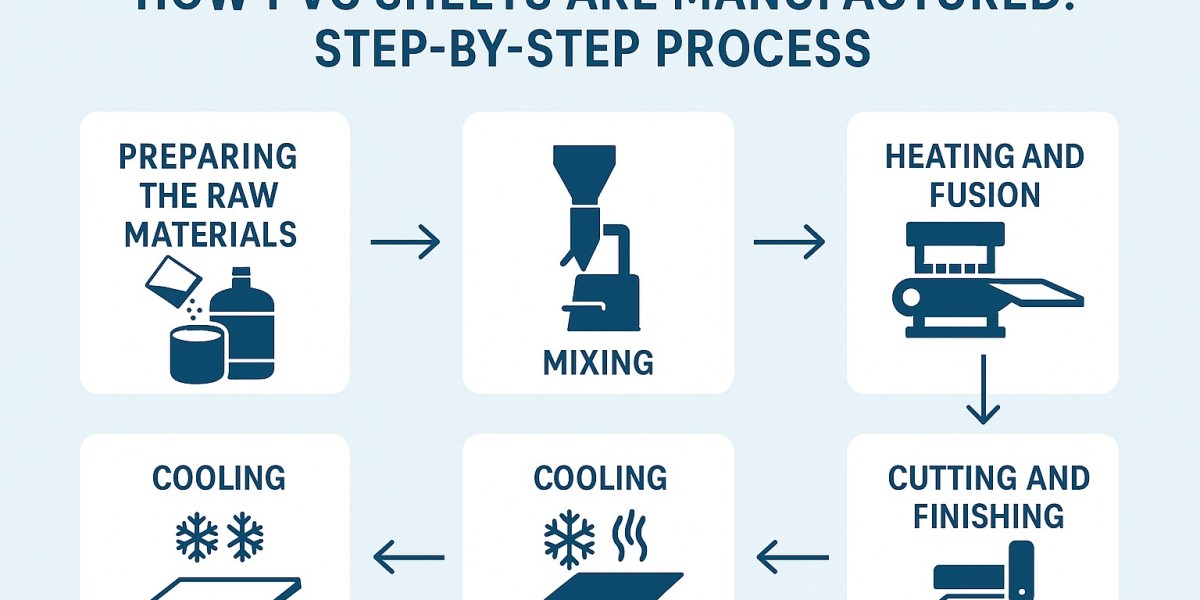PVC sheet is one of the most important materials in industries like construction, advertising, and furniture. It is strong, lightweight, and affordable, which makes it a popular choice for many applications. But how exactly is a PVC sheet made? Let’s go through the step-by-step process in simple terms.
Step 1: Preparing the Raw Materials
The main ingredient of a PVC sheet is Polyvinyl Chloride (PVC) resin. To make it usable, the resin is mixed with other additives such as stabilizers, plasticizers, lubricants, and pigments. These additives give the sheet its strength, flexibility, and color.
Step 2: Mixing
Once the raw materials are ready, they are blended in a high-speed mixer. This step is very important because proper mixing ensures the final PVC sheet will be uniform in quality and performance. Advanced mixers help achieve consistent results, which reduces production errors.
Step 3: Heating and Fusion
The mixed material is then heated. At high temperatures, the ingredients melt and fuse together. This creates a plastic mass that can be shaped into sheets. The heating process must be carefully controlled to avoid defects like bubbles or uneven surfaces.
Step 4: Extrusion
After fusion, the hot plastic mass is passed through an extruder. The extruder shapes the material into flat sheets of the desired thickness. This is one of the key steps in PVC sheet manufacturing because it determines the size and quality of the sheet.
Step 5: Cooling
Once the sheet is formed, it needs to be cooled down to maintain its shape. Cooling is usually done with water or air. If cooling is not done properly, the PVC sheet may warp or lose its smooth surface.
Step 6: Cutting and Finishing
Finally, the sheets are cut into standard sizes or customized according to customer needs. Additional finishing steps like surface treatment, printing, or lamination may also be applied depending on the end use.
Conclusion
The production of a PVC sheet is a detailed process that requires the right raw materials, precise mixing, and advanced equipment. From preparing the resin to extrusion and finishing, every step plays an important role in ensuring the sheet is strong, durable, and reliable. With modern machines and high-quality mixers, manufacturers can produce PVC sheets that meet the needs of many different industries.







